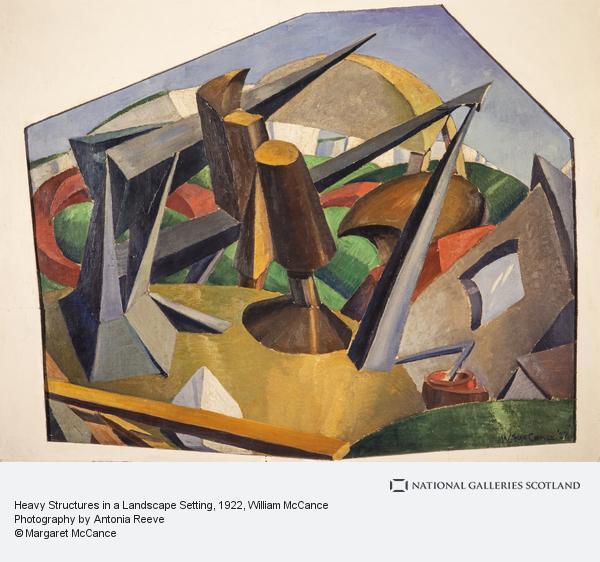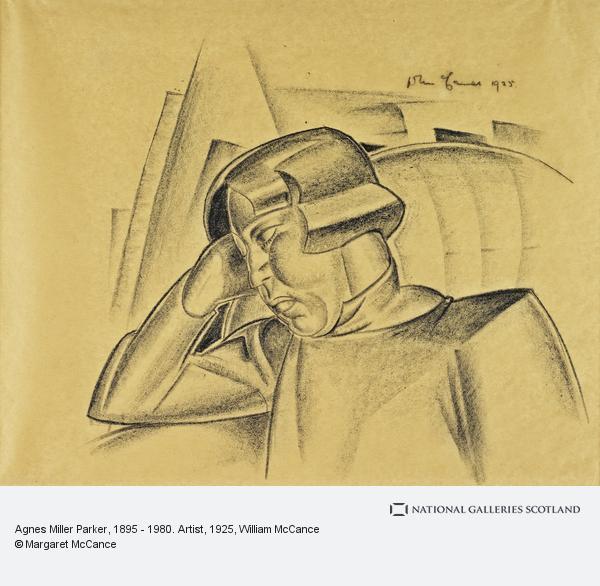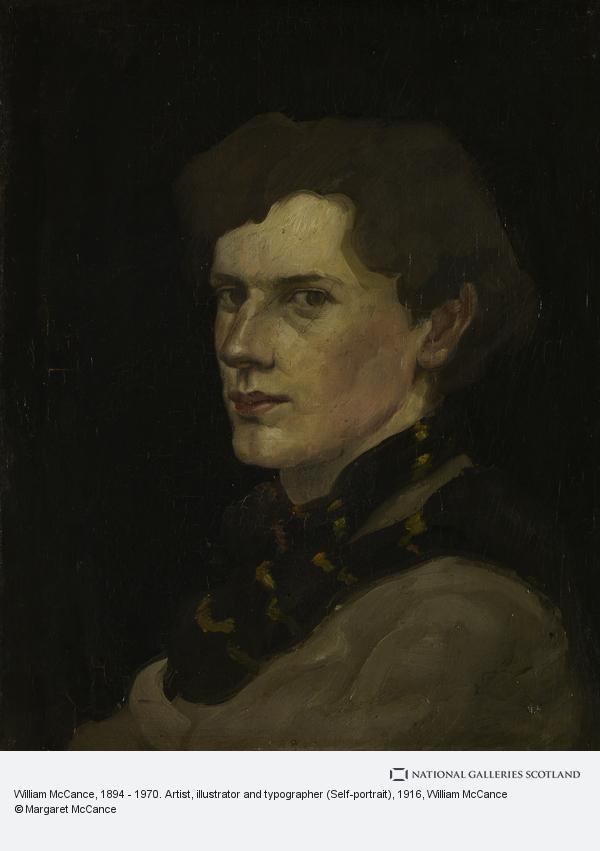In 1925, Scottish poet Hugh MacDiarmid described him as ‘the most promising phenomenon of contemporary Scotland in regard to art’, but the name William McCance may not be familiar to many. McCance died in 1970 and his death entry is found among the 64,943 deaths registered in Scotland for this year, now available to search on the Scotland's People website. We decided to find out more about William McCance and his career.
The Scottish artist was born in Cambuslang on 6th August 1894 to James (a coal miner) and Elizabeth McCance (nee McBride). Between 1911-1915 McCance attended the world-famous Glasgow School of Art, where he studied drawing and painting. Shortly after completing his course McCance met fellow alumni Agnes Miller Parker (1895-1980), illustrator and engraver who would become his first wife. Parker's birth certificate can also be found on Scotland's People. She was born Agnes Millar Parker in Irvine, County of Ayr on 25th March 1895 (National Records of Scotland, Statutory Register of Births, 595/115 page 145).
Detail from the birth entry of William McCance, 6th August 1894
Crown copyright, National Records of Scotland (NRS), Statutory Register of Births, 627/411 page 246
The First World War was to dominate the young couple’s lives; 1916 saw the introduction of conscription in Great Britain and McCance was called up for military service. McCance was among 16,000 men during the First World War who refused to take up arms as Conscientious Objectors to the conflict. After refusing to join the forces he appeared at Hamilton Sheriff Court and was sentenced to serve 112 days imprisonment with Hard Labour at HMP Wormwood Scrubs in West London. After serving his sentence, McCance was called up once more, but this time he was sent to a labour camp in Knutsford run by the Home Office for Conscientious Objectors (COs). The purpose of these camps was to discourage others from applying for Conscientious Objector status and ‘punish’ those who had refused military service. As such, the treatment of COs was often harsh, and the living conditions squalid.

Heavy Structures in a Landscape Setting by William McCance, 1922
Image credit: National Galleries of Scotland. Copyright: Margaret McCance
In February 1919 McCance was discharged from the labour camp. In 1918 he had managed to obtain leave to marry Agnes Miller Parker and on his release the couple moved to London to start married life together. It was at this time that McCance began his artistic career in earnest. A true Modernist, McCance was greatly influenced by the contemporary art scene in Europe. Several of his paintings evoke the work of the Scottish Colourists (see ‘Kimono study’, 1919), and he was also influenced by Cubism – an art movement focused on representing a subject from different viewpoints, making the artwork appear fragmented - invented around 1907 by Georges Braque and Pablo Picasso in France. McCance also explored Vorticism, probably influenced by his lodger and Vorticist champion, artist William Roberts (1895-1980). The Vorticists were a British art movement founded in 1914 by writer Wyndham Lewis and revelled in the age of the machine and living in a fast-paced world. McCance and Miller were hopeful of a cultural Scottish Renaissance and collaborated with poet and modernist Hugh MacDiarmid on several artistic and literary projects.

Agnes Miller Parker (1895-1980) by William McCance, 1925
Image credit: National Galleries of Scotland. Copyright: Margaret McCance
McCance also became a teacher and art critic during his time in London, writing for popular publications, including The Spectator.
Between 1930-1933 McCance was Controller of the Gregynog Press which was established in 1922 by sisters and art patrons Margaret and Gwendoline Davies of Powys, Wales. The press produced intricately bound and illustrated volumes, some of which were created by McCance’s wife, Agnes. The quality of the bindings and illustrations were to raise awareness of the aesthetic. The chosen volumes were often published in Welsh, such as the press’s edition of Aesop’s Fables and the Lamentations of Jeremiah published in English.
After his time at the Gregynog Press, McCance focused on his own artistic output before becoming a lecturer in Typography and Book Production at Reading University, a position he held until 1960. In 1955 McCance separated from his first wife and in 1963 he married fellow lecturer Dr Margaret Chislett. After retiring from his lecturing post, an exhibition of his work, including prints, paintings and sculptures was exhibited at Reading Museum and Art Gallery.
McCance and his second wife, Margaret settled in his native Scotland. He died on 19th November 1970 in Girvan, Ayrshire.
Detail of William McCance's death certificate, 1970
Crown copyright, NRS, Statutory Register of Deaths, 1970, 594 page 117
McCance was unusual in the breadth of his styles, stepping away from the realism of his contemporaries, such as Cecile Walton (1891-19569, and embodying the modernist spirit in his work, which he no doubt passed on to his students in later life. Examples of his art work are displayed in public art galleries across Scotland. Many pieces were presented by Dr Margaret McCance, to the National Galleries of Scotland.

Self Portrait by William McCance, 1916
Image credit: National Galleries of Scotland. Copyright: Margaret McCance